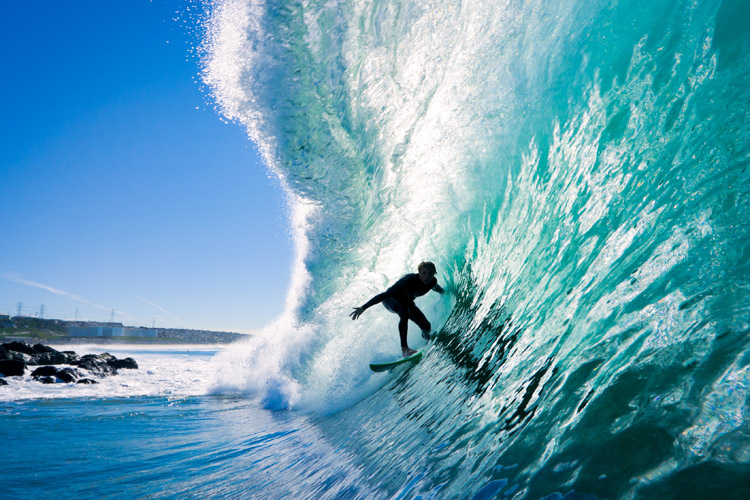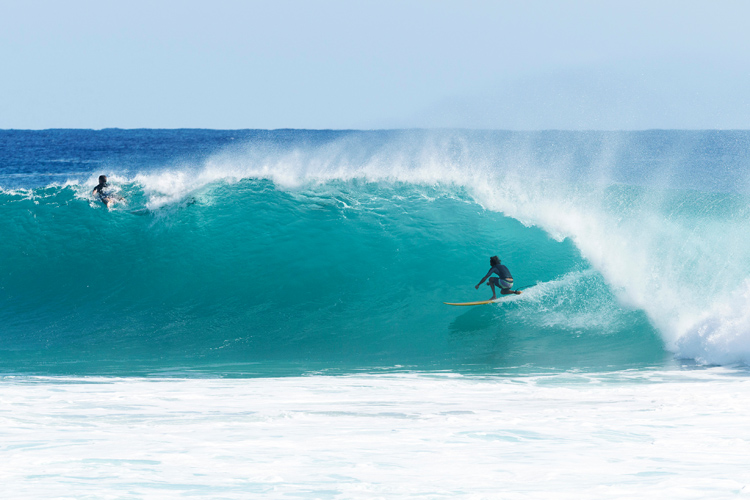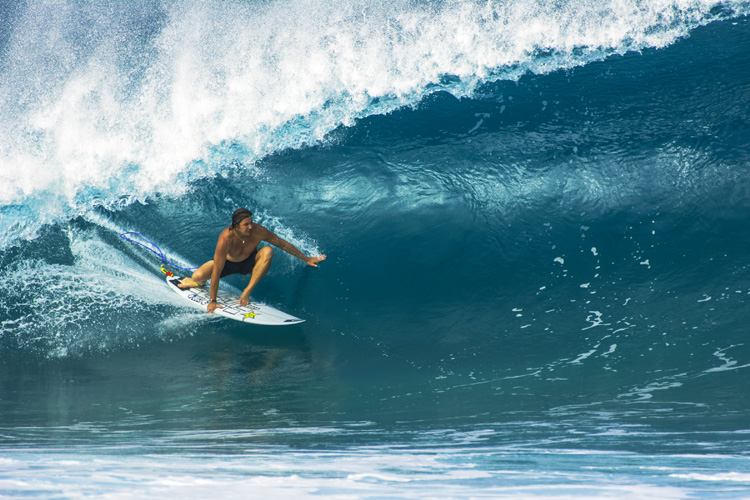Stalling is one of the most critical skills to learn in advanced surfing. When performed correctly, it allows you to generate drag and reduce speed to match the pace of the barrel.
The art of stalling a surfboard requires a deep involvement of your body, not only in straight connection with the wave itself but also with the surfboard.
Getting barreled depends a lot on the behavior of the wave. Wider and perfect-peeling barreling waves are easier to ride than freight train cylinders with occasional falling lips.
Nevertheless, in both cases, the ability to decelerate at the right moment will maximize your tube time and allow you to get deeply covered right in front of the foam ball.
It will always be a thin line between allowing the liquid curtain to cover you and going fast enough so you don't get obliterated.
Learning to stall a surfboard will also be useful for pulling out of the wave or kicking out of a wave and even for avoiding obstacles like rocks.
There are five basic techniques that you can apply to stall a surfboard.

Arm Anchoring
Are you taking off on a powerful vertical wave? Plant your inside arm in the water to pivot your body and stay anchored before pulling into the barrel.
Hand Dragging
Whenever you're going too fast and heading into the shoulder of the wave, drag your hand - or even both - in the face of the wave to slow down the speed.
For example, if you're in the barrel, get your inside hand in the water and grab your outside rail with the other hand.
Butt Dragging
This is one of the most used stalling techniques in backside tube riding. It is especially useful in steep take-offs where you need to stay close to the face of the wave.
By leaning your butt to the wave, you will control speed and stick parallel to the wave while waiting for the chandelier to cover you.

Knee Dragging
This is an alternative method to using your arms, hands, and butt. Use your front knee as a brake by getting it in contact with the face of the wave.
It may be difficult to manage and control speed in hollow waves, though.
Foot Pressure Over the Tail
It's the most common way of reducing the speed of a surfboard. Applying the brakes on the board's tail will transfer the friction to the back of the board.
You've got to do it slowly; otherwise, you'll lose too much speed and eventually wipe out.
A simple hydrodynamic test reveals the effect of stalling a surfboard by putting all your weight on the back foot and lifting the front of the board.
